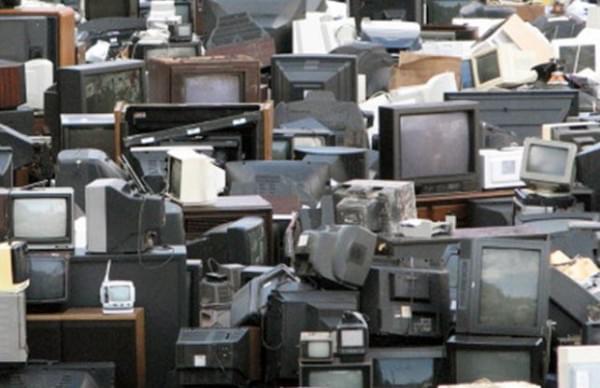More than 40 million tons of e-waste was generated globally in 2014
Old kitchen and bathroom equipments, office equipment make up the 41.8 million tons of electronic waste generated globally in 2014 – according to the report of the United Nations University (UNU).
In 2014, people worldwide discarded all but a small fraction of an estimated 41.8 million metric tonnes (megatonnes – Mt) of electrical and electronic products — mostly end-of-life kitchen, laundry and bathroom equipment like microwave ovens, washing machines and dishwashers.
And the volume of e-waste is expected to rise by 21% to 50 million Mt in 2018.
The new figures were released today in the Global E-Waste Monitor 2014, compiled by the United Nations University (UNU), the UN’s think tank. The report offers in unprecedented detail a wealth of insights into the location and composition of the world’s fast-growing e-waste problem.
Just 7% of e-waste last year was made up of mobile phones, calculators, personal computers, printers, and small information technology equipment.
Almost 60% was a mix of large and small equipment used in homes and businesses. (MTI)
Related news
AM: Development of Hungary’s most valuable water snail habitat has begun
🎧 Hallgasd a cikket: Lejátszás Szünet Folytatás Leállítás Nyelv: Auto…
Read more >The Ministry of Agriculture pays special attention to the protection of the Hungarian grasshopper mouse
🎧 Hallgasd a cikket: Lejátszás Szünet Folytatás Leállítás Nyelv: Auto…
Read more >Climate protection supervision fee: payment deadline approaching
🎧 Hallgasd a cikket: Lejátszás Szünet Folytatás Leállítás Nyelv: Auto…
Read more >Related news
The New Year’s Eve fireworks fair is back: temporary sales will start in department store parking lots at the end of December
🎧 Hallgasd a cikket: Lejátszás Szünet Folytatás Leállítás Nyelv: Auto…
Read more >The first Eastern European non-alcoholic beer turns 50
🎧 Hallgasd a cikket: Lejátszás Szünet Folytatás Leállítás Nyelv: Auto…
Read more >Sausage: pork prices are already going down, but they won’t be cheaper in stores – a significant correction may come in the spring at the earliest
🎧 Hallgasd a cikket: Lejátszás Szünet Folytatás Leállítás Nyelv: Auto…
Read more >







